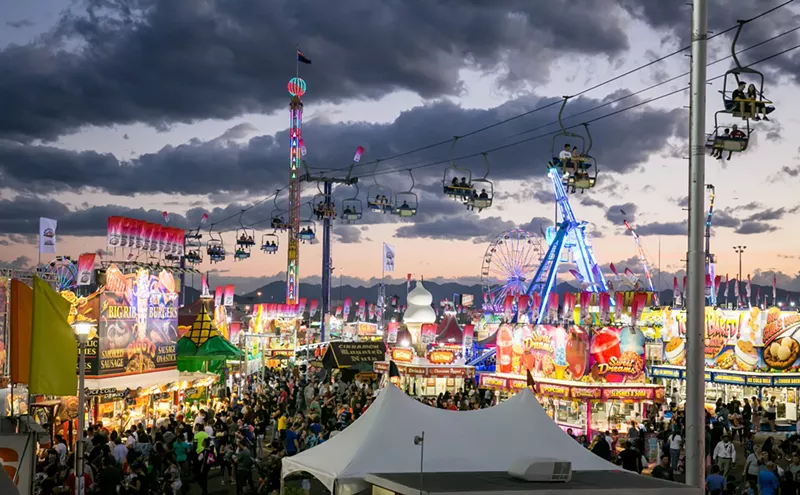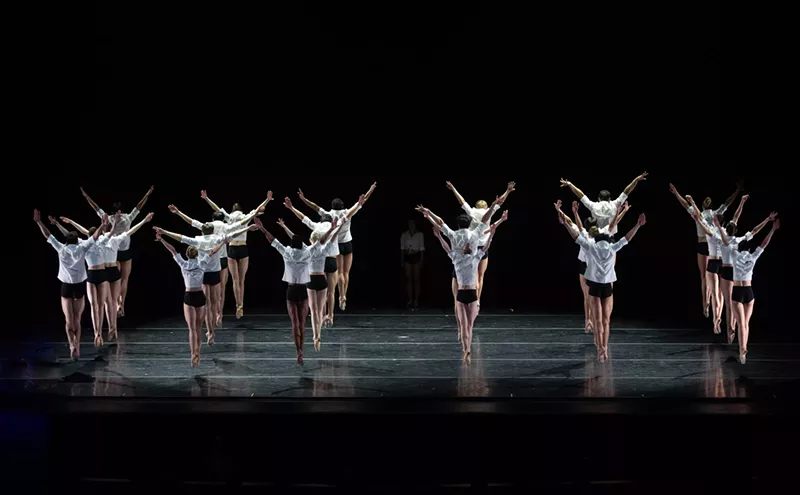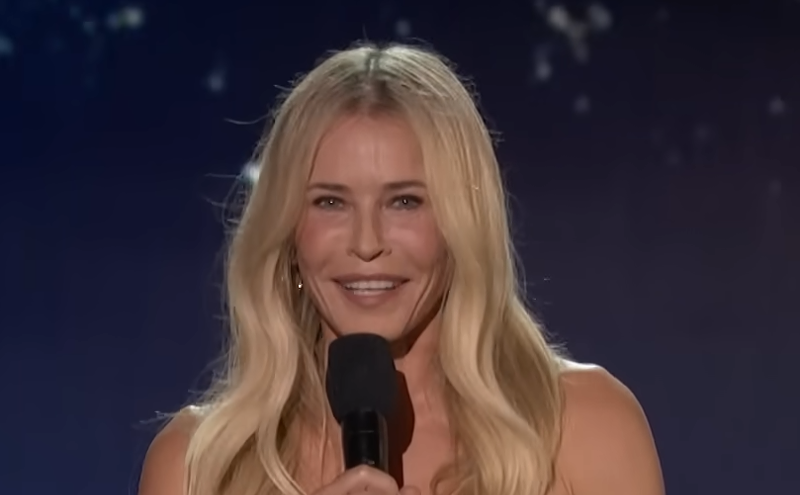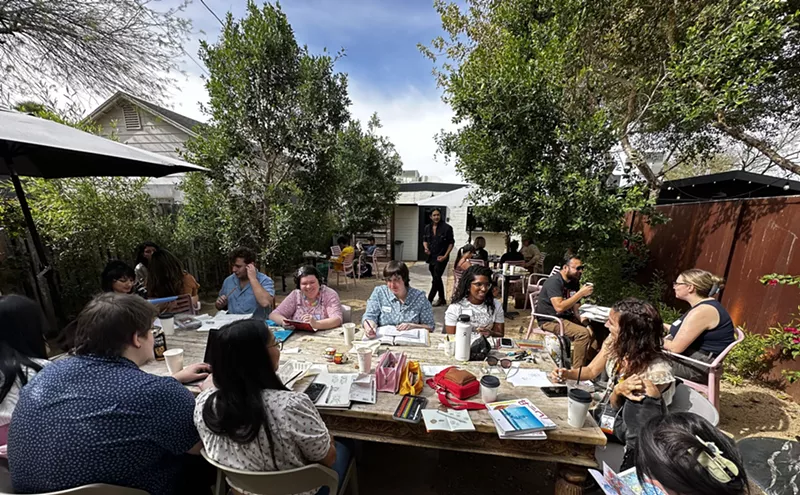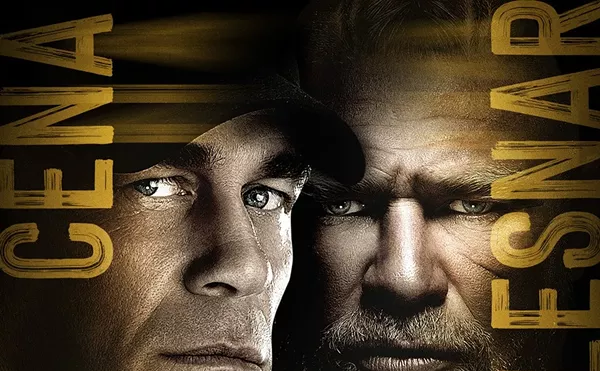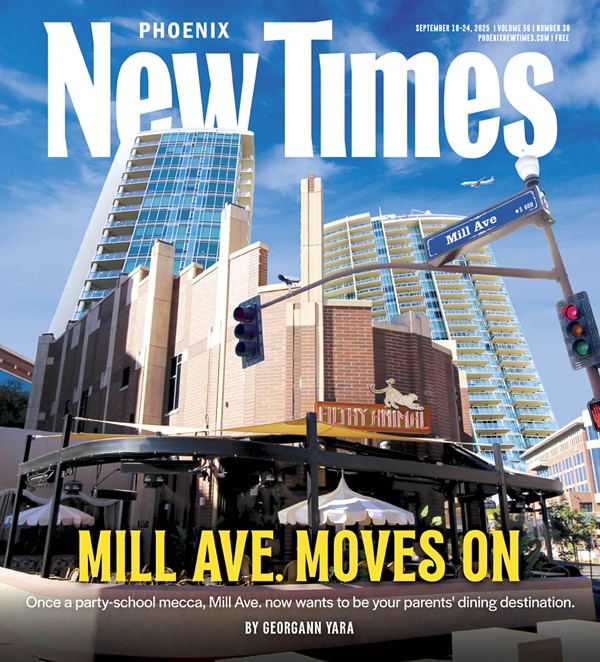"What a trip," mumbles a student leaving the upper gallery at Arizona State University's Nelson Fine Arts Center, and for once, the phrase is entirely appropriate. He has just finished looking at a display of work inspired by Lewis Carroll's nineteenth-century children's books Alice's Adventures in Wonderland and Through the Looking-Glass.
Aided by magic mushrooms and looking-glass passageways, Alice went on one fantastic trip. The forty-plus artists in the ASU exhibition follow Alice down the rabbit hole, one way or another, and provide some of the best contemporary art you'll see in Phoenix.
Bernice Steinbaum, owner of the New York gallery that organized the exhibition, invited the artists to create work in response to Lewis' short novels. Although superficially nonsensical, the "Alice" stories are evidence of the repressions and contradictions of Victorian England. Lewis Carroll (a pseudonym for Charles Lutwidge Dodgson) was a pious and by all accounts sexless cleric who unwittingly reveals in these books an inappropriate passion for young girls, as well as a latent taste for violence.
Since their publication in 1865 and 1871, Alice in Wonderland and Through the Looking-Glass have been subjected to every possible analysis--metaphysical, political and Freudian. But visual interpretations have been sparse, and Steinbaum wanted to generate some.
"Alice made a good stepping-off point for a lot of ideas that haven't been visually interpreted since Disney," said the Steinbaum Gallery's director, Jody Krauss, referring to the 1951 animated film.
The gallery gave the artists complete freedom of expression--and they took advantage of it. Virtually every medium is represented, and the range of styles is mind-boggling, from traditional figurative painting through pure abstraction to conceptual text pieces. The artists build on Carroll's inadvertent exposes of nineteenth-century creepiness and use "Alice" as a vehicle or, more appropriately, as a mirror, to reflect similar problems in our own culture. The work they have produced seems closer to Grace Slick's interpretation of the Alice story in the psychedelic Sixties ballad "White Rabbit" than to Disney's sunny outlook. The artists declined to simply illustrate the fanciful tales, but delved into timely issues of drug abuse, the mindlessness of contemporary culture and the prejudice of the mainstream.
Faith Ringgold's painted quilt, for example, gives a twist to the story of Alice in the looking-glass world. Alice, black in this version, followed a white rabbit dressed in a vest and found herself in a land of monsters.
"I told them my name is Alice in Wonderland and that I am through the Looking-Glass. They told me there was an Alice here once but that she looked nothing like me," a text encircling the quilt reads. At the end, Alice tells her mother to watch for the rabbit that led her into this nightmarish land--it was last seen alive and well in Manhattan. In Ringgold's updated version, a white rabbit in a vest is likely to be a junk-bond trader.
"Heed the Warning" by Maureen Theresa Trotto is a further caution to the materialistic baby boom generation. Through a television screen, a psychedelic version of Wheel of Fortune appears on a checkered board. Alice stands on the wheel with one foot planted on "Tea Party" and the other on "Three Wishes." Half human, half insect, the commentator holds a microphone as a Barbie-doll rendition of Vanna White stands at the ready. Dollar bills and chess pieces litter the game.
Weak in construction but strong in conception, Trotto's piece stands in neat parallel to the plot of Through the Looking-Glass. The living chess pieces in Carroll's story are ignorant of the game's plan and cannot tell if they move by their own will or are pushed by invisible fingers. Are we equally oblivious to our movements through life? Are we led like sheep by the promises of Wheel of Fortune?
A surprising work is Native American painter Juane Quick-to-See Smith's sculpture "The Dream Child Moving Through a Land of Wonders Wild and New." Quick-to-See Smith throws artistic caution to the wind with this throwback-to-the-Sixties assemblage. Syringes, pill bottles, chocolate bars, Coke cans, alcohol bottles and a tiny jam box--all the addictions of our society--are pasted onto the chicken-wire frame of a small girl in a dishcloth skirt and patent leather shoes.
There are other welcome surprises in the exhibition. The late Keith Haring contributed one of the show's real standouts, done with his characteristic brushwork. In this enigmatic paper piece, Haring has painted the Caterpillar smoking his hookah on top of a reproduction of the Mona Lisa. In an accompanying statement, Haring noted that he first drew the Caterpillar meeting Alice when he was twelve. Out of all the mystical and hallucinogenic images in the story, he found this moment the most obvious and compelling. Also noteworthy is Rudolf Baranik's text painting at the front of the exhibition. It reads like an information panel until you suddenly realize it's a conceptual art piece. Several "dictionary" definitions record literary and artistic uses of the word "Alice." The last entry is the documentation for this very exhibition and recalls conceptual-art guru John Baldessari's painting that is nothing but text documenting its own exhibition at museums around the nation. Along with surprises, there are also bloopers. Red Grooms was the only one to submit an older work in response to Steinbaum's challenge. His uninspiring 1985 paper piece "American Geisha" has nothing to do with the theme, except that the figure is looking in a mirror. Give us a break, Red. The man who created a sculptural mockup of the entire city of Cleveland in five days can't take a little time to create a piece for "Alice"?
Another incomprehensible inclusion is Harry Erikson's "White Nights." Somehow Erikson has tied the Alice stories to devil worship and in the process managed to include a photograph of himself. Made up as the devil, he is surrounded by a three-dimensional frame of pillars, chains and crack vials. The work has little to do with Alice, little aesthetic appeal and little symbolic impact.
The inclusion of Erikson--a young artist in New York with no gallery affiliation--illustrates Steinbaum's method in curating the show. She carefully selected a mix of established and emerging artists, hoping that the latter would provide "fresh viewpoints" with no "established vernaculars."
These wild cards balanced the established artists in the show who, unlike Quick-to-See Smith or even Haring, refused to budge from their recognizable style and format. A case in point is Rodney Alan Greenblat. Although the East Village School went out of fashion several years ago, Greenblat still clings to his cartoony three-dimensional constructions. His "Mr. Carroll's Neighborhood" is a bright, wooden wall-hanging featuring Tweedledum and Tweedledee, Alice, and Carroll himself surrounded by the words to "Jabberwocky." While most of us have moved on to other things, Greenblat is still mesmerized by the media of his childhood and such children's shows as Mister Rogers' Neighborhood and Pee-wee's Playhouse. Try something new, Alan.
Such mixing of the famous and the not-so-famous seems to have more to do with politics than art. As a group, the artists themselves are a politically correct bunch. Not only do they proselytize on issues of drug abuse, racism and the environment--Joanne Leonard's "Julia With Approaching Devastation Series" shows the earth exploding like a balloon--but the artists also represent all the major ethnic groups. "The gallery is committed to certain political viewpoints," says Krauss. "Of the sixteen artists in our stable, 50 percent are women and at least 25 percent are minorities."
While the selection of artists was carefully controlled, their work was not. Steinbaum could have imposed a certain stylistic and ideological viewpoint, but she decided to give the artists free rein. Her only criterion was the literary theme. By single-mindedly concentrating on this idea, she has gathered an eclectic array that seems to fit the "Alice" stories.
It's loud and bright and the imagery is blunt. Just as all the characters in Alice in Wonderland and Through the Looking-Glass keep pushing Alice around, the show pushes the viewer around. While one student happily called the show a trip, another visitor described it as "scary" and quickly left.
Considering all the bizarre forms and figures that pop up in the show, such contradictory reactions seem entirely proper.
If you are having a particularly bad flashback, however, you may want to skip the "Alice" show for now and instead visit Anne Flaten Pixley's exhibition in the Nelson Fine Arts Center's lower gallery. Meditative, ethereal and lyrical, the show couldn't be more of a contrast. A resident of Southern California, Pixley originally studied paper construction. Her first images were single marks on handmade papers and centered on, according to University Art Museum curator Cindy Gedeon, "the significance of mark-making as a gesture of human presence."
Pixley's simple drawings evolved into three-dimensional abstractions of painted sticks affixed directly to the wall. This work, which has something of the spontaneity of a Jackson Pollack drip painting or a John Cage musical score, relies greatly on chance. Pixley's show at ASU features three recent bodies of work and includes abstract drawings and paintings of subtle shapes and colors, as well as a site-specific installation. The ASU staff has done a great job of getting in the mood of the work and have created an atmosphere akin to a Zen garden. To add to the effect, Pixley created a beautiful, random spray of white sticks across the white wall of the gallery. The viewer is encouraged to stop a while, to sit and experience. Pixley has written that her work is "about looking and looking very hard, about the kind of revelation that the visual world can give us."
It is a thoughtful and endearing show. After visiting "Alice," it may be just the ticket.
"Alice, and Look Who Else, Through the Looking-Glass," will be on display through May 27, and the work of Anne Flaten Pixley through June 3, at the University Art Museum in the Nelson Fine Arts Center on Arizona State University campus.
DON'T MESS WITH THE MARSHAL YOU'LL GET R... v5-16-90



